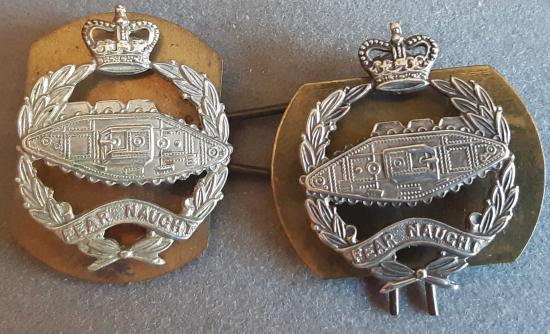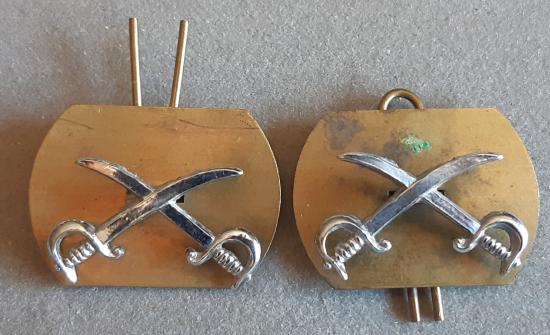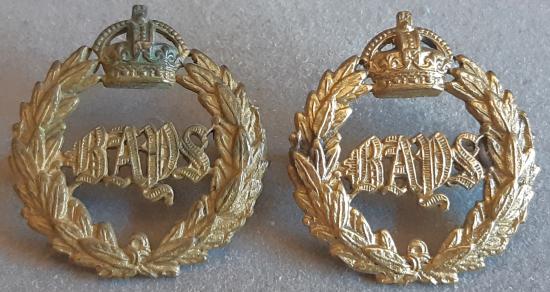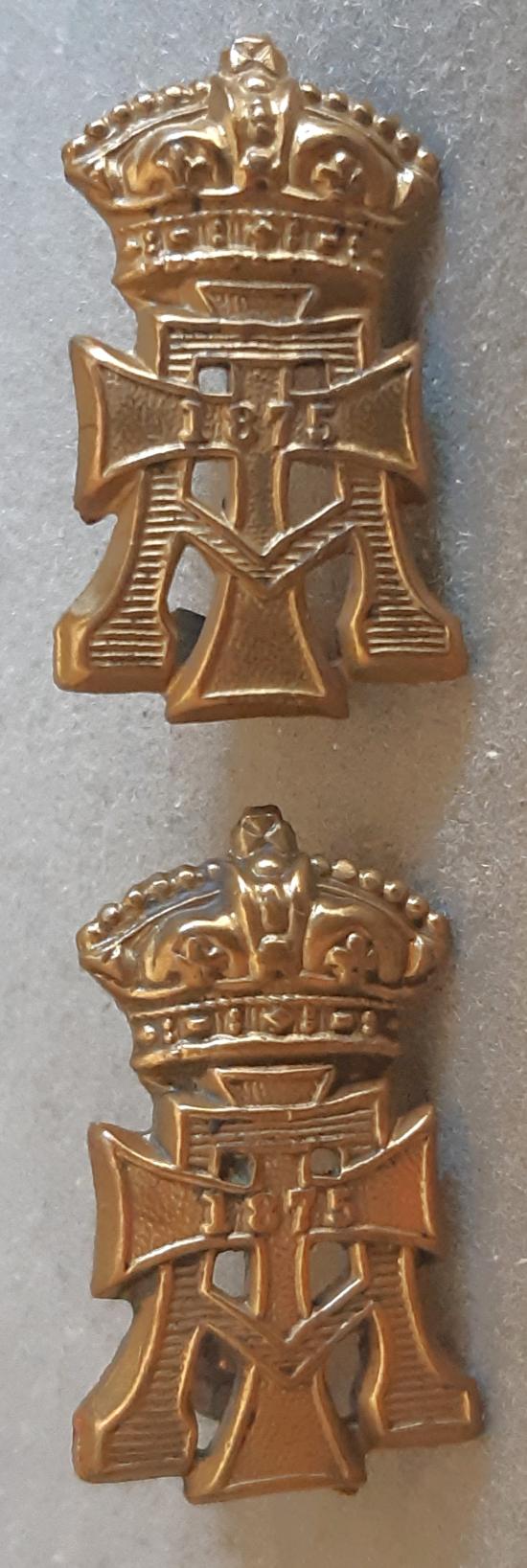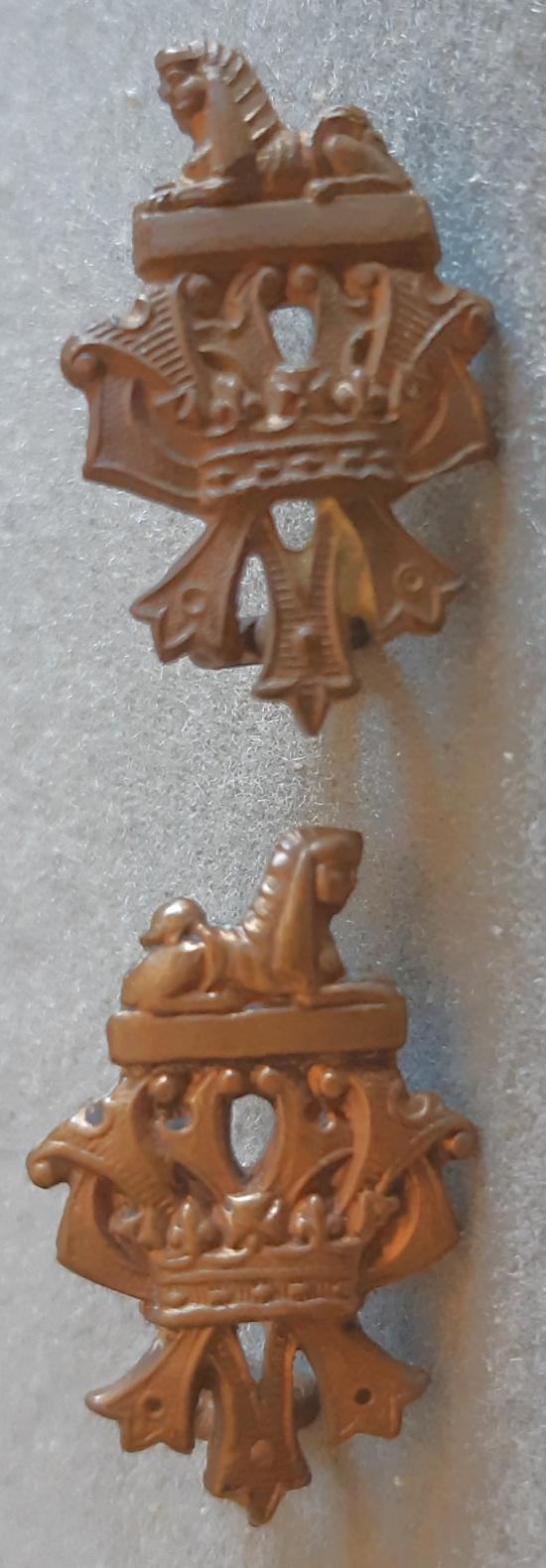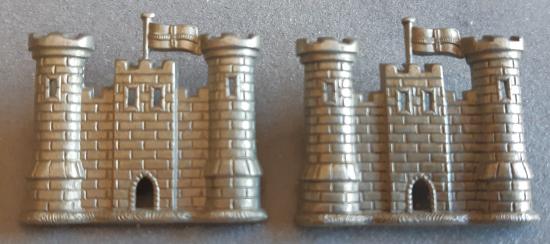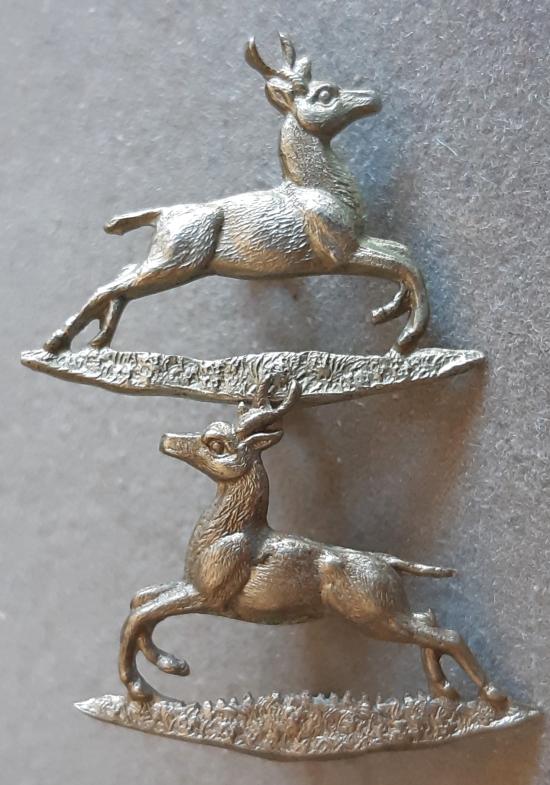BRITISH - Royal Tank Regiment Q/C Pair White Metal Collar Badges
BRITISH - Royal Tank Regiment Q/C Pair White Metal Collar Badges
Nice pair of post 1953 collar badges, complete with brass backing plates and keeper pins. One badge has a horizontal plate lug, and other is vertical.
Condition: Excellent
Fixings: Single Plate Lugs
Material: White Metal
Maker / Markings:... read more
30.00 NZD
BRITISH - Physical Training Corps pair Chrome No Crown Collar Badges
BRITISH - Physical Training Corps pair Chrome No Crown Collar Badges
Nice pair of chromed collar badges, complete with brass backing plates and keeper pins.
Condition: Excellent
Fixings: Single Plate Lugs
Material: Chromed
Maker / Markings: None
Size: 16.5mm H x 27.5mm W read more
25.00 NZD
BRITISH - The Queen's Bays (2nd Dragoon Guards) K/C Pair Gilding Metal Collar Badges
BRITISH - The Queen's Bays (2nd Dragoon Guards) K/C Pair Gilding Metal Collar Badges
Nice pair of collar badges, one has slight verdigris on crown.
Condition: Excellent
Fixings: Two Copper Lugs (East/West)
Material: Gilding Metal
Maker / Markings: None
Size: 32mm H x 30mm W read more
30.00 NZD
BRITISH - 1st Vol Battalion -The Royal Leicestershire Regt Pair White Metal Collar Badges (Churchill 542)
BRITISH - 1st Vol Battalion -The Royal Leicestershire Regt Pair White Metal Collar Badges (Churchill 542)
Nice pair of early collar badges. Reference is Colin Churchill 542.
Condition: Excellent
Fixings: Two Copper Lugs (East/West)
Material: White Metal
Maker / Markings: None
Size: 32m... read more
70.00 NZD
BRITISH - Green Howards (Alexandra Princess of Wales’s Own Yorkshire Regt.) Pair Gilding Metal Collars (Churchill 561)
BRITISH - Green Howards (Alexandra Princess of Wales’s Own Yorkshire Regt.) Pair Gilding Metal Collars (Churchill 561)
Nice pair of collar badges, lugs slightly different shape. Reference is Colin Churchill 561.
Condition: Excellent
Fixings: Two Copper Lugs (North/South)
Material: Gilding Metal
Maker /... read more
30.00 NZD
BRITISH - The Wiltshire Regiment Pair Gilding Metal Collar Badges (Churchill 1502)
BRITISH - The Wiltshire Regiment Pair Gilding Metal Collar Badges (Churchill 1502)
Slight wear on high points, slight mismatch in colour. Reference is Colin Churchill 1502.
Condition: Very Good
Fixings: Two Copper Lugs (East/West)
Material: Gilding Metal
Maker / Markings: None
Size: 27... read more
30.00 NZD
BRITISH - The Royal Irish Fusiliers Pair Gilding Metal Collars (Churchill 1767/68)
BRITISH - The Royal Irish Fusiliers Pair Gilding Metal Collars (Churchill 1767/68)
Great pair of Victorian collar badges. Reference is Colin Churchill 1767/68.
Condition: Excellent
Fixings: Two Copper Lugs (North/South)
Material: Gilding Metal
Maker / Markings: None
Size: 25mm H x 15mm W read more
80.00 NZD
BRITISH - 15th London RVC (London Scottish) Pair White Metal Collar Badges (Churchill 1959)
BRITISH - 15th London RVC (London Scottish) Pair White Metal Collar Badges (Churchill 1959)
Great pair of Victorian collar badges. Reference is Colin Churchill 1959
Condition: Excellent
Fixings: Two Plate Lugs (East/West)
Material: White Metal
Maker / Markings: None
Size: 31mm H x 28mm W read more
60.00 NZD
CANADA - Royal Canadian Dragoons Pair White Metal Collar Badges
CANADA - Royal Canadian Dragoons Pair White Metal Collar Badges
Great pair of collar badges from Canada.
Condition: Excellent
Fixings: Two Copper Lugs (East/West)
Material: White Metal
Maker / Markings: None
Size: 38mm H x 33mm W read more
40.00 NZD
BRITISH - The 6th (Inniskilling) Dragoons Pair White Metal Collar Badges
BRITISH - The 6th (Inniskilling) Dragoons Pair White Metal Collar Badges
Great pair of collar badges.
Condition: Excellent
Fixings: Two Copper Lugs (North/South)
Material: White Metal
Maker / Markings: None
Size: 23.5mm H x 28.5mm W read more
50.00 NZD


